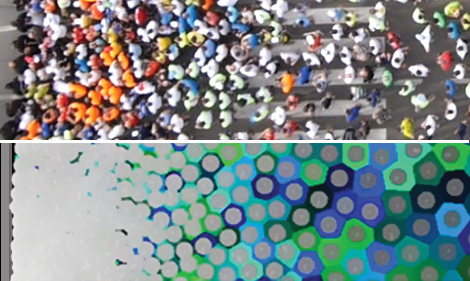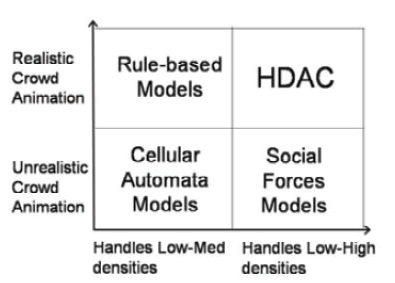89
Technical Research |Establishing Model Methodology
88
Technical Research |Establishing Model Methodology
This method of modeling allows further analyses and investigations; otherwise, another level of simplification would be required to explain the growing complexity.”[18]
This communicates that there is merit in avoiding unnecessary details in order to simplify the model. Complex systems are inherently “difficult to comprehend,” as such it becomes more effective to simulate this complexity by utilizing the emergent phenomena that is present within self-organized adaptive dynamic models. “Once [this] model is deemed valid, it is extendable to different variables and parameters,”[19] which allows the process of refinement and improvement upon future iterations of this simulation. From this, it becomes clear that, at this stage, it is beneficial to not get carried away with higher complexity models, and instead investigate a more basic approach, not only to simplify the process but also to build a deeper understanding of how these systems work at a fundamental level. As such, this thesis will investigate and build upon the algorithmic steering behaviors developed by computer scientist Craig Reynolds in the late 1980s, specifically for its relatively simple and comprehensive nature.[20] While this may not produce results at the level of higher complexity models, such as HiDAC that utilizes both “psychological and geometrical rules [alongside] social and physical forces,”[21] it will build a solid foundation that can be expanded later to encompass additional considerations.
18 Ehsan Baharlou, Generative Agent-Based Architectural Design Computation: Behavioral Strategies for Integrating Material, Fabrication and Construction Characteristics in Design Processes (Stuttgart: Institute for Computational Design and Construction, 2017), 46.
19 Baharlou, Generative Agent-Based Architectural Design Computation: Behavioral Strategies for Integrating Material, Fabrication and Construction Characteristics in Design Processes, 74.
20 Reynolds, “Steering Behaviors For Autonomous Characters.”
21 Pelechano, Allbeck, & Badler, “Controlling Individual Agents in High-Density Crowd Simulation.”
Centroidal Particles
The Centroidal Particles approach utilizes personal spaces to calculate compressional forces between the agents to calculate agent interactions.
From Omar Hesham and Gabriel Wainer, “Centroidal Particles for Interactive Crowd Simulation,” 2016 Summer Computer Simulation Conference (SCSC 2016), (2016): https://doi.org/10.22360/summersim.2016.scsc.012.


HiDAC
The HiDAC approach utilizes “a combination of psychological and geometrical rules with a social and physical forces model” to create a variety of emergent behaviours such as line formation and pushing.
From Nuria Pelechano, Jan M. Allbeck, & Norman I. Badler, “Controlling Individual Agents in High-Density Crowd Simulation,” Proceedings of the 2007 ACM SIGGRAPH/Eurographics Symposium on Computer Animation, (2007): 99-108, http://repository.upenn.edu/hms/210.